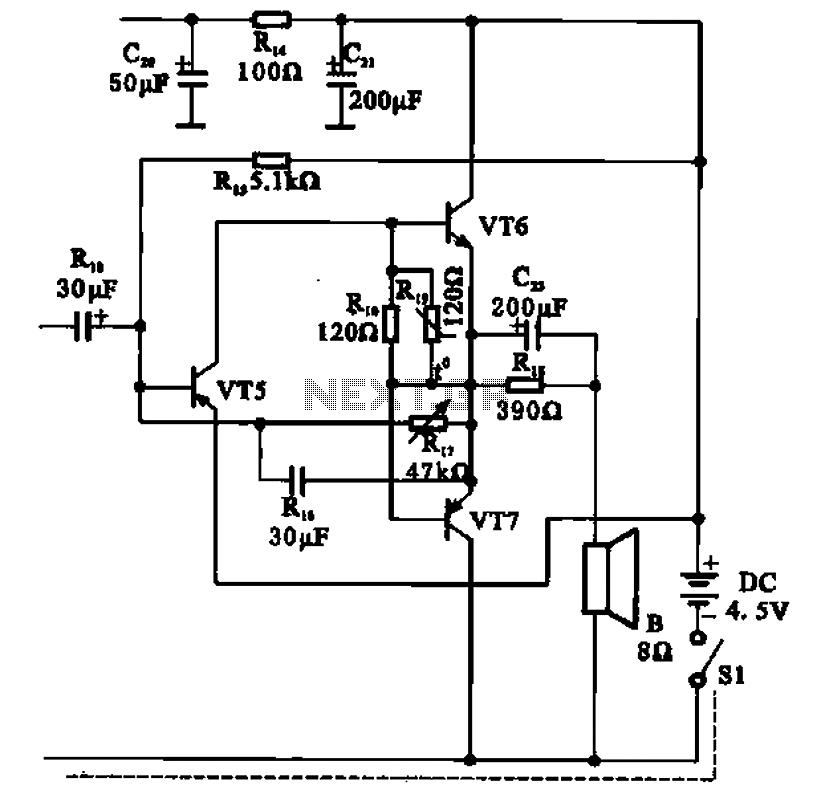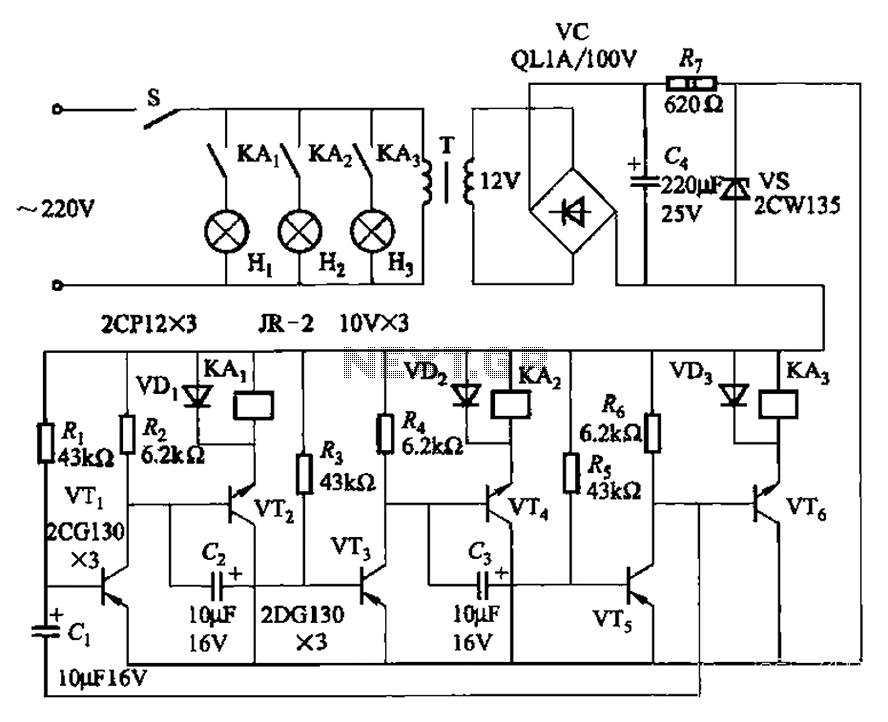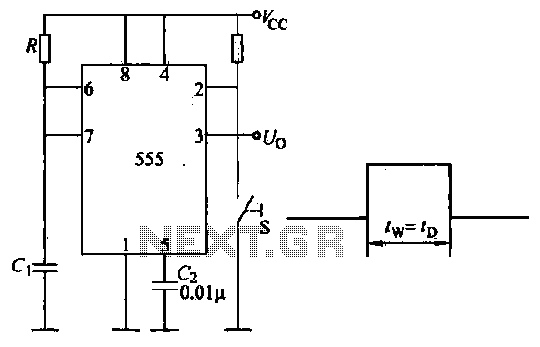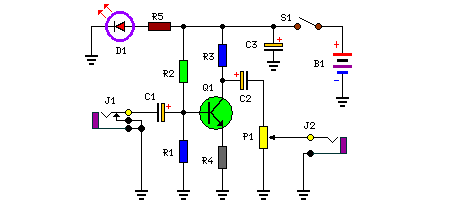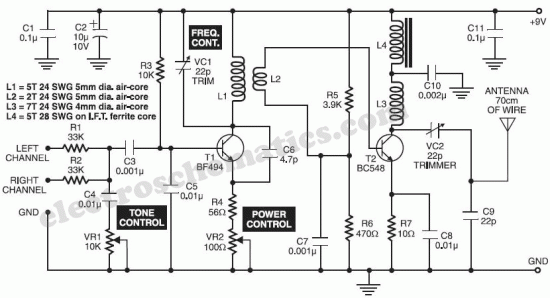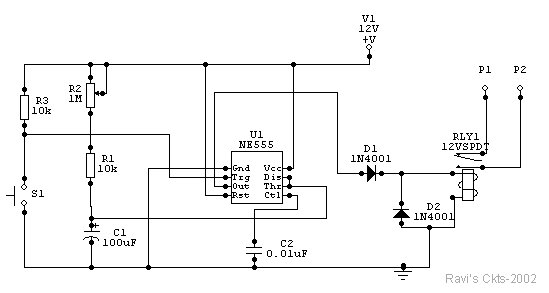
SCR BRY35 For Simple Radio Control Circuit
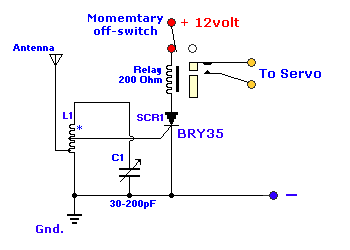
The following circuit illustrates the SCR BRY35 used in a simple radio control circuit. Features include a straightforward and efficient receiver for operation.
The SCR BRY35 is a silicon-controlled rectifier designed to facilitate the control of high-power loads through low-power signals. In the context of a simple radio control circuit, the SCR functions as a switch that can be triggered by a radio frequency signal, allowing for wireless control of devices.
The circuit typically consists of a radio receiver module that receives signals from a transmitter. The output from the receiver is connected to the gate of the SCR, which allows it to turn on when a specific signal is detected. Once triggered, the SCR remains in the conducting state until the current flowing through it drops below a certain threshold, known as the holding current.
Key components of the circuit may include:
1. **Radio Receiver Module**: This component receives the radio frequency signals and converts them into a suitable voltage level for triggering the SCR.
2. **SCR BRY35**: This acts as the primary switching device, controlling the load connected to it.
3. **Load**: This could be any high-power device such as a motor or lamp that the circuit is intended to control.
4. **Power Supply**: Provides the necessary voltage and current to the circuit.
The operational efficiency of the circuit can be enhanced by incorporating additional elements such as filtering capacitors to stabilize the power supply and protect against voltage spikes. Additionally, appropriate resistors may be used to limit the gate current to the SCR, ensuring reliable operation without damaging the component.
This simple radio control circuit utilizing the SCR BRY35 is suitable for various applications, including remote-controlled toys, home automation systems, and other devices requiring wireless control. Its design emphasizes simplicity and efficiency, making it an ideal choice for hobbyists and professionals alike.The following circuit shows about SCR BRY35 For Simple Radio Control Circuit. Features: simple and efficient receiver for operating:(starter .. 🔗 External reference
The SCR BRY35 is a silicon-controlled rectifier designed to facilitate the control of high-power loads through low-power signals. In the context of a simple radio control circuit, the SCR functions as a switch that can be triggered by a radio frequency signal, allowing for wireless control of devices.
The circuit typically consists of a radio receiver module that receives signals from a transmitter. The output from the receiver is connected to the gate of the SCR, which allows it to turn on when a specific signal is detected. Once triggered, the SCR remains in the conducting state until the current flowing through it drops below a certain threshold, known as the holding current.
Key components of the circuit may include:
1. **Radio Receiver Module**: This component receives the radio frequency signals and converts them into a suitable voltage level for triggering the SCR.
2. **SCR BRY35**: This acts as the primary switching device, controlling the load connected to it.
3. **Load**: This could be any high-power device such as a motor or lamp that the circuit is intended to control.
4. **Power Supply**: Provides the necessary voltage and current to the circuit.
The operational efficiency of the circuit can be enhanced by incorporating additional elements such as filtering capacitors to stabilize the power supply and protect against voltage spikes. Additionally, appropriate resistors may be used to limit the gate current to the SCR, ensuring reliable operation without damaging the component.
This simple radio control circuit utilizing the SCR BRY35 is suitable for various applications, including remote-controlled toys, home automation systems, and other devices requiring wireless control. Its design emphasizes simplicity and efficiency, making it an ideal choice for hobbyists and professionals alike.The following circuit shows about SCR BRY35 For Simple Radio Control Circuit. Features: simple and efficient receiver for operating:(starter .. 🔗 External reference
Warning: include(partials/cookie-banner.php): Failed to open stream: Permission denied in /var/www/html/nextgr/view-circuit.php on line 713
Warning: include(): Failed opening 'partials/cookie-banner.php' for inclusion (include_path='.:/usr/share/php') in /var/www/html/nextgr/view-circuit.php on line 713
